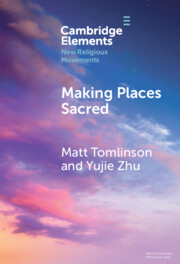Element contents
Making Places Sacred
Published online by Cambridge University Press: 14 March 2025
Summary
- Type
- Element
- Information
- Online ISBN: 9781009616355Publisher: Cambridge University PressPrint publication: 10 April 2025
References
This Element is free online from 14th March 2025 - 28th March 2025

